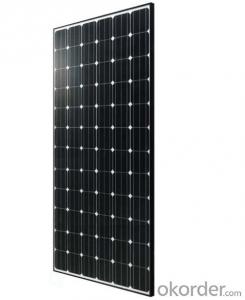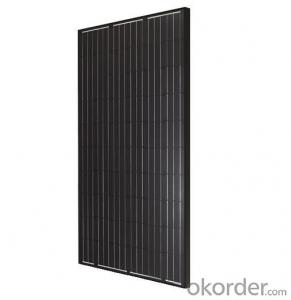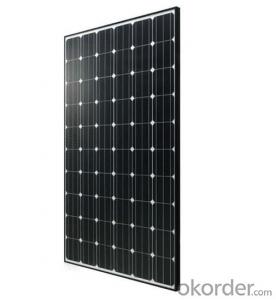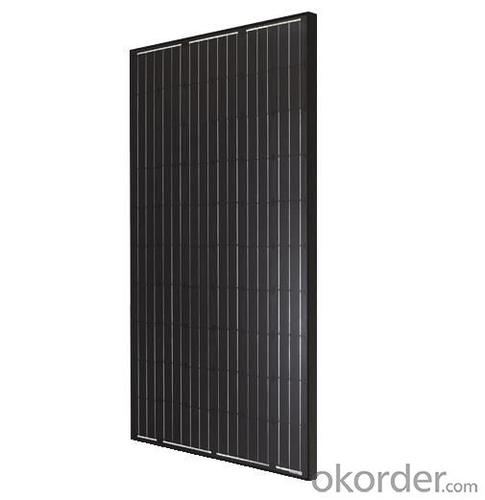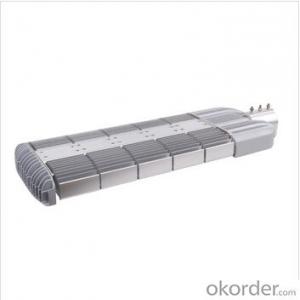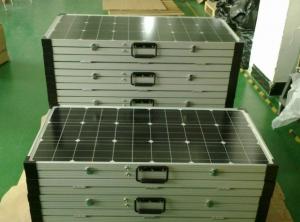Solar Panels Panasonic Mono Panel SWE-M660 Series 250W
OKorder Service Pledge
OKorder Financial Service
You Might Also Like
SWE-M660-250/255/260/265/270
MONO CRYSTALLINE SOLAR MODULE
futures:
High module efficiency and stable power output base on leading process technology
Outstanding electrical performance under high-temperature or low-irradiance conditions
Ease of installation and applications due to the innovative engineering design
Rigorous quality control meets the highest internationalstandard
Added Value From Warranty
High module efficiency up to 16.60%
Positive power tolerance: 0/+5W
Robust frame to up to 5400Pa load
Self-cleaning surface
Anti-PID technology
Hot-Spot protect
Anti-Reflective glass
data sheet
| Electrical Characteristics @ STC | SWE-M660-250 | SWE-M660-255 | SWE-M660-260 | SWE-M660-265 | SWE-M660-270 |
| (STC:standard Test Conditions) | |||||
| Max. Power (PMAX) [ Wp ] | 250 | 255 | 260 | 265 | 270 |
| Power Output Tolerance (PMAX) [ Wp ] | 0/+5 | 0/+5 | 0/+5 | 0/+5 | 0/+5 |
| Max. Power Voltage (VMPP) [ V ] | 30.6 | 30.8 | 30.9 | 31.2 | 31.4 |
| Max. Power Current (IMPP) [ A ] | 8.17 | 8.28 | 8.42 | 8.5 | 8.6 |
| Open-Circuit Voltage (VOC) [ V ] | 37.6 | 37.8 | 37.9 | 38.2 | 38.4 |
| Short-Circuit Current (ISC) [ A ] | 8.7 | 8.96 | 9.1 | 9.19 | 9.28 |
| Module Efficiency (ŋm) [ % ] | 15.4 | 15.7 | 16 | 16.3 | 16.6 |
- Q: Single crystal solar panels and polycrystalline solar panels
- monocrystalline silicon market share and a slight increase, and now the market to see the majority of single-crystal silicon cells. Monocrystalline silicon solar cell silicon crystal is very perfect, its optical, electrical and mechanical properties are very uniform, the color of the battery is mostly black or dark, especially for small pieces of small pieces of consumer products.
- Q: If a solar panel (using 36 3x6 solar cells) puts out 60 watts, how many panels would I need (for a house) if I use a max of 2300 kWh in a month? I checked my electric usage for the past 2 years and the kWh is usually lower but I wanted to use the most kWh used (2300) for my question. Thanks!
- One key piece of information missing is the average number of peak sun hours per day. This will vary by location. It is latitude, regional weather, and site shading must be considered. Another consideration is the loses. The 60 watt solar panel is a DC voltage. The 2300 kWh is for the AC power consumed. There are loses in the inverter to change the electricity from DC to AC. There are also loses for wire resistance, soiling of the panels, wire resistance, etc. To work out an example of the math, I'll use 5 peak sun hours and a total efficiency of 80%. The math can be worked out as a single formula but I'll break it into steps for you. (2300 kwh/month)(month/30.4 days) = 75.65 kWh/day (60 W)(5 psh)(80%) = 240 Wh/day = 0.24 kWh/day/panel # of panels needed = Energy use / Energy generated (75.65 kWh/day) / (0.24 kWh/day/panel) = 36 panels.
- Q: How long does it take to recoup the cost of solar panels through energy savings?
- The time it takes to recoup the cost of solar panels through energy savings varies depending on various factors such as the cost of installation, the amount of sunlight received, the energy consumption of the household, and any applicable rebates or incentives. On average, it can take anywhere from 5 to 20 years to recoup the initial investment. However, with the decreasing costs of solar panels and the rising energy prices, the payback period is becoming shorter, making solar panels a more financially viable option for many homeowners.
- Q: Can solar panels be used in areas with high levels of shade?
- Solar panels can still be used in areas with high levels of shade, but they may not be as efficient as in areas with direct sunlight. The shade reduces the amount of sunlight reaching the panels, which decreases their overall performance. However, with advancements in technology, some panels are designed to handle shade better than others. Additionally, proper installation and placement of the panels can help optimize their performance even in shaded areas.
- Q: How do solar panels affect the property's long-term financial viability?
- Solar panels can positively impact a property's long-term financial viability by reducing or eliminating monthly electricity bills, providing potential revenue through excess energy production, increasing property value, and potentially attracting tax incentives or subsidies.
- Q: Are there any fire hazards associated with solar panels?
- Yes, while solar panels themselves do not pose a significant fire hazard, there are some potential fire risks associated with their installation and operation. These risks primarily stem from electrical malfunctions, such as faulty wiring, improper installation, or damage to the electrical components. Additionally, in rare cases, solar panels can contribute to the spread of fire by acting as a source of fuel or by hindering firefighting efforts due to their presence on rooftops. However, with proper installation, regular maintenance, and adherence to safety guidelines, the fire hazards associated with solar panels can be minimized.
- Q: For those solar panels that you install on your rooftops, do they generate electricity when it's cloudy? And if yes, how much electricity does it generate compared to sunny days? For example...like only 25% electricity generated compared to sunny days?
- No, silicon photovoltaics reacts to a very specific frequency of infrared light which matches the bandgap energy of it's outer electron shell. This frequency is reflected by clouds. However, thermal solar collectors such as evacuated tube collectors can function under cloudy skies albeit at a lower rate and there is at least one hybrid photovoltaic and thermal panel designed to take advantage of this.
- Q: Tell me complete installation I have one 50Ah battery two 80 watts solar panels about 30 meter DC wire i charge ontroller and 000watt inverter. How i hook two solar panels to charge controller to battery then inverter?
- Wires from panels go to controller input terminals. Controller DC battery terminals to battery so that the controller will protect batteries and split power as required by demand to the inverter. Output DC on controller to inverter. Output AC or outlets on the inverter to AC appliances. One thousand watts is not very much capacity. It will keep your computer running and a lamp to read by. It won't run major appliances. A hair dryer is typically 500 watts and could not be run by this system.
- Q: How much electricity can a solar panel generate?
- The amount of electricity a solar panel can generate depends on various factors such as the size and efficiency of the panel, the amount of sunlight it receives, and the location. On average, a standard solar panel can produce anywhere from 250 to 400 watts of electricity per hour.
- Q: Can solar panels be installed on flat roofs?
- Yes, solar panels can be installed on flat roofs. In fact, flat roofs are one of the common types of roofs where solar panels are installed. However, proper installation techniques and mounting systems are required to ensure optimal efficiency and safety.
Send your message to us
Solar Panels Panasonic Mono Panel SWE-M660 Series 250W
OKorder Service Pledge
OKorder Financial Service
Similar products
Hot products
Hot Searches
Related keywords
